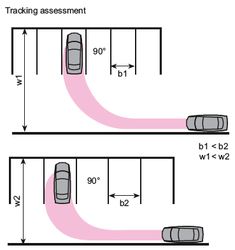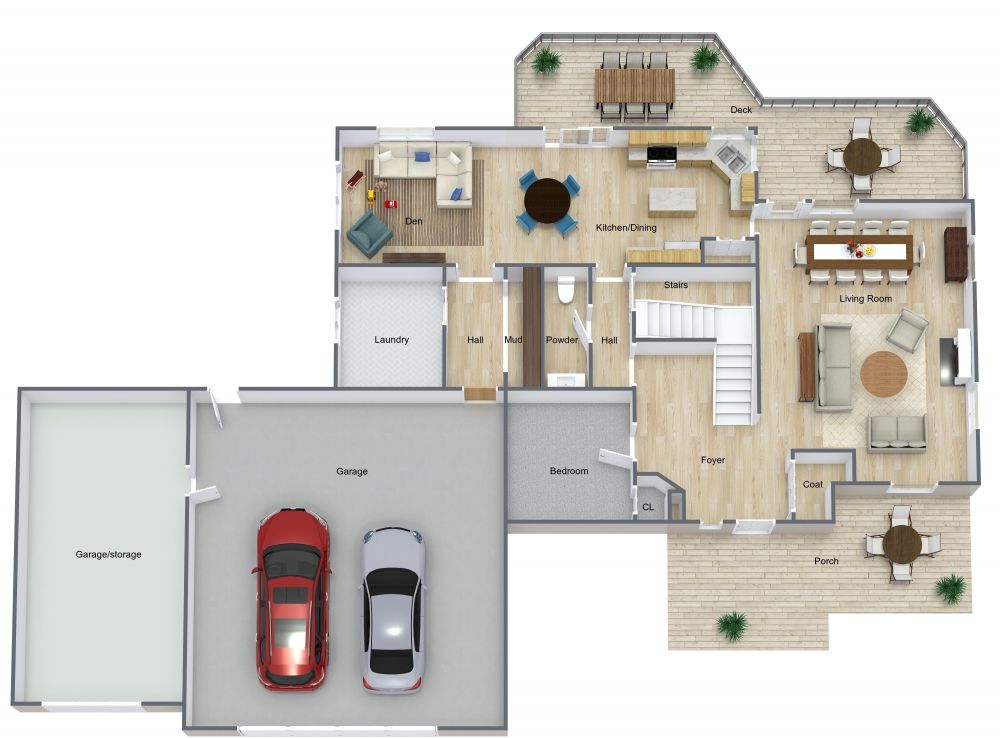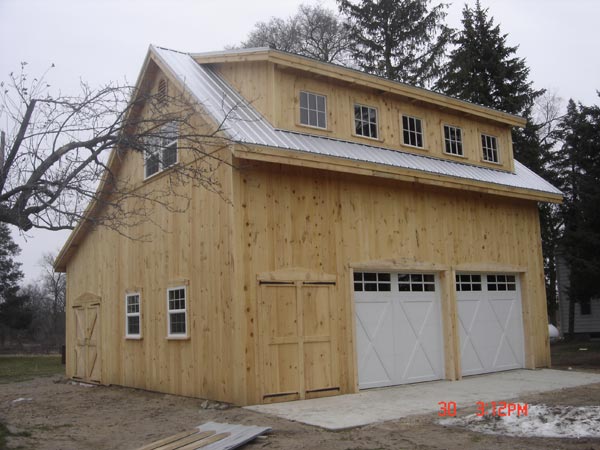
The garage door is an essential part of any home's design, whether you are building or replacing an existing one. Not only is it important to the aesthetics of your home but also for security and productivity. It is important to choose the right material, color, or finish for your garage door. There are many options available, from glass to wood, and they all provide different benefits.
Garage doors can not only help secure your home, but also make your home more energy efficient. Choose a style that complements your house's architecture, if you prefer a modern design. This includes sliding, tilt-up, and canopy styles. Modern designs often include clean lines, aluminum frames or acrylic frames, and temper glass panels.
You might consider a carriage-style entrance for a more traditional appearance. These doors are similar to French door, but hang from hinges. When they open, they look similar to large barn door doors. Their popular design is a result of their versatility. They can be found in many homes. The key difference is the amount you allow for the door's opening and closing.

Garage doors with carriage-style designs are usually made from wood. Some garage doors are all-wood while others have an aluminum or fiberglass frame. Composite doors can be more expensive than all-wood ones. But, they are stronger than their composite counterparts and are less likely to rot. They often come with higher insulation, such all-wood panels and polystyrene back.
Because they are strong, aluminum garage doors are a great choice. They will not rust in harsh Midwest weather. If they begin to fade, you can also paint them. Fiberglass is not as strong but is less likely crack and splinter.
The life expectancy of your garage door hinges will also be affected by which spring you choose. While springs are generally guaranteed for three to seven years, poor maintenance or a heavy load can shorten the life of your torsion spring. Your spring's life expectancy will be shorter if you live near a humid environment.
Nearly all garage doors include at least one torsion Spring. These springs are used to store tension and lift the door. The springs can be unwound once the door has been raised. The springs are attached by cables that wrap around grooves in cable drums. Lubricant is a good lubricant that will prolong the life span of the springs. Grease can make the wheels "skate" in the track, which can reduce the life of the spring.

Side-hinged garage doors can also be an option. These doors hang from hinges at either end of the opening and can be manually controlled or automatically with a special remote. Swinging garage door are more difficult to automate and are often used in garages that have limited headroom.
FAQ
Is $30000 sufficient for a kitchen remodeling project?
A kitchen renovation can cost anywhere between $15000 - $35000 depending on how much you want to spend. If you want a complete kitchen overhaul, expect to pay more than $20,000. For less than $3000, you can update appliances, add lighting, and replace countertops.
An average cost for a complete renovation is between $12,000-$25,000. There are ways you can save money without sacrificing on quality. A new sink can be installed instead of replacing an older one. This will cost you approximately $1000. A second option is to buy used appliances at half their cost.
Kitchen renovations take longer than other types of projects, so plan accordingly. You don't want to start working in your kitchen only to realize halfway through that you're going to run out of time before completing the job.
The best thing is to get going early. Start looking at options and collecting quotes from various contractors. Then narrow your choices based price, availability, quality, or both.
Once you have contacted a few contractors, ask them for estimates and then compare prices. Sometimes the lowest bid doesn't necessarily mean the best. It is important to find someone with the same work experience as you who will provide a detailed estimate.
Remember to include all the extras when calculating the final cost. These may include labor or material charges, permits and so forth. Be realistic about how much you can afford and stick with your budget.
Don't be afraid to tell the contractor what you think about any of the quotes. Tell the contractor if you are not satisfied with the first quote. Give him or her another chance. Don't let pride stand in the way of saving money.
How long does it typically take to renovate a bathroom?
Two weeks typically is required to remodel a bathroom. The size of your project will affect the time taken to remodel a bathroom. A few small jobs, like installing a vanity or adding a bathroom stall, can be done in one day. Larger projects such as removing walls, laying tile floors, or installing plumbing fixtures may require several days.
It is a good rule to allow for three days per room. If you have four bathrooms, then you'd need 12 days.
What would it cost for a home to be gutted versus what it would cost to build one?
A home's contents are removed, such as walls, floors, ceilings and plumbing. Gutting is done when you want to make some modifications before moving in. Gutting a home is typically very expensive because so many things are involved in doing this work. Depending on your job, the average cost to gut a home can run from $10,000 to $20,000.
The process of building a home involves the construction of a house from one frame to another. Next, the builder adds walls, flooring and roofing. This is often done after purchasing lots of land. Building a home usually costs less than gutting and can cost between $15,000 and $30,000.
It all comes down to what you want to do in the space. You'll likely need to spend more money if you want to gut a property. If you're building your home, however, you don't have to tear everything down and start over. Instead of waiting for someone else, you can build it how you want.
Are there any savings on a remodel of a bathroom or kitchen.
Remodeling a bathroom or kitchen is an expensive proposition. However, when you consider how much money you pay each month for energy bills, upgrading your home might make more sense.
Small upgrades can help you save thousands of dollars per year. A few easy changes like adding insulation to ceilings or walls can reduce heating/cooling costs by as much as 30%. Even a small addition can increase comfort and resale values.
It is crucial to consider durability and ease of maintenance when renovating. Materials like porcelain tile, solid wood flooring, and stainless-steel appliances will last longer and need fewer repairs than vinyl countertops.
Altering old fixtures can also help reduce utility bills. Low-flow showerheads or faucets can help reduce water usage by up 50 percent. Replacing inefficient lighting with compact fluorescent bulbs can cut electricity consumption by up to 75 percent.
Why should I renovate my house instead of buying a new one.
Although it is true that houses become more affordable every year, you still pay for the same area. You get a lot more bang than you pay, but that extra square footage is still a significant expense.
Maintaining a house that doesn’t need much maintenance is cheaper.
You can save thousands by remodeling instead of buying a new home.
By remodeling your current home, you can create a unique space that suits your lifestyle. Your home can be made more comfortable for your family.
What is it worth to tile a bathroom?
If you want to do it yourself, go big. Full bathroom remodels are an investment. But when considering the long-term value of having a beautiful space for years to come, it makes sense to invest in quality materials and fixtures.
The right tiles can make a significant difference in the look and feel of your room. This quick guide will help with your selection of the best tiles, no matter if you're looking for small or big projects.
First, you need to choose which flooring material you want. Ceramics, porcelain, stone, and natural wood are common choices. Next, choose a style such as a classic subway tile or a geometric pattern. Next, choose a color palette.
For large bathroom remodels, you will likely want the tiles to match the rest of your room. You could choose to use white subway tiles for the kitchen and bathroom, while using darker colors in other rooms.
Next, estimate the scope of work. Is it time to upgrade a small powder area? Do you want to add a walk-in wardrobe to your master bathroom?
Once you have determined the scope of your project, go to local shops and look at samples. You can then get a feel of the product and how it is installed.
For great deals on porcelain tiles, you can shop online. Many sellers offer bulk discounts and free shipping.
Statistics
- $320,976Additional home value: $152,996Return on investment: 48%Mid-range average cost: $156,741Additional home value: $85,672Return on investment: (rocketmortgage.com)
- Windows 3 – 4% Patio or backyard 2 – 5% (rocketmortgage.com)
- bathroom5%Siding3 – 5%Windows3 – 4%Patio or backyard2 – (rocketmortgage.com)
- Attic or basement 10 – 15% (rocketmortgage.com)
- 57%Low-end average cost: $26,214Additional home value: $18,927Return on investment: (rocketmortgage.com)
External Links
How To
How to Remove Tile Grout From Floor Tiles
Most people don't know that tile grouting exists. It is used to seal joints between tiles. Many different types of grout are available today, each using a specific purpose. We will demonstrate how to remove grout from tile floors.
-
Before you start this process, make sure that you have all the necessary tools. You will need a grout cutter and grout scraper.
-
You will now need to clean off any dirt and debris that may have been under the tile. The grout cutter can be used to cut the grout and remove any loose tiles. Take care not to damage the tiles.
-
After you've cleaned up everything, grab the grout scraper to remove any grout. If there isn't any grout left, you can go to step 4.
-
You can now move on to the next stage after you have completed all your cleaning. One of the rags can be used to soak in water. You want to make sure that the rag gets completely wet. To ensure that the rag does not absorb water, dry it.
-
Place the wet cloth on the joint where the tile meets with the wall. The grout will begin to crumble if you press down hard on the rag. Slowly pull the rag towards you and continue pulling it back and forth until you have removed all the grout.
-
Repeat steps 4 to 5 until grout is gone. Rinse the ragout and repeat the process if necessary.
-
Once you have finished removing all the grout, wipe down the surface of the tiles with a damp cloth. Let dry thoroughly.